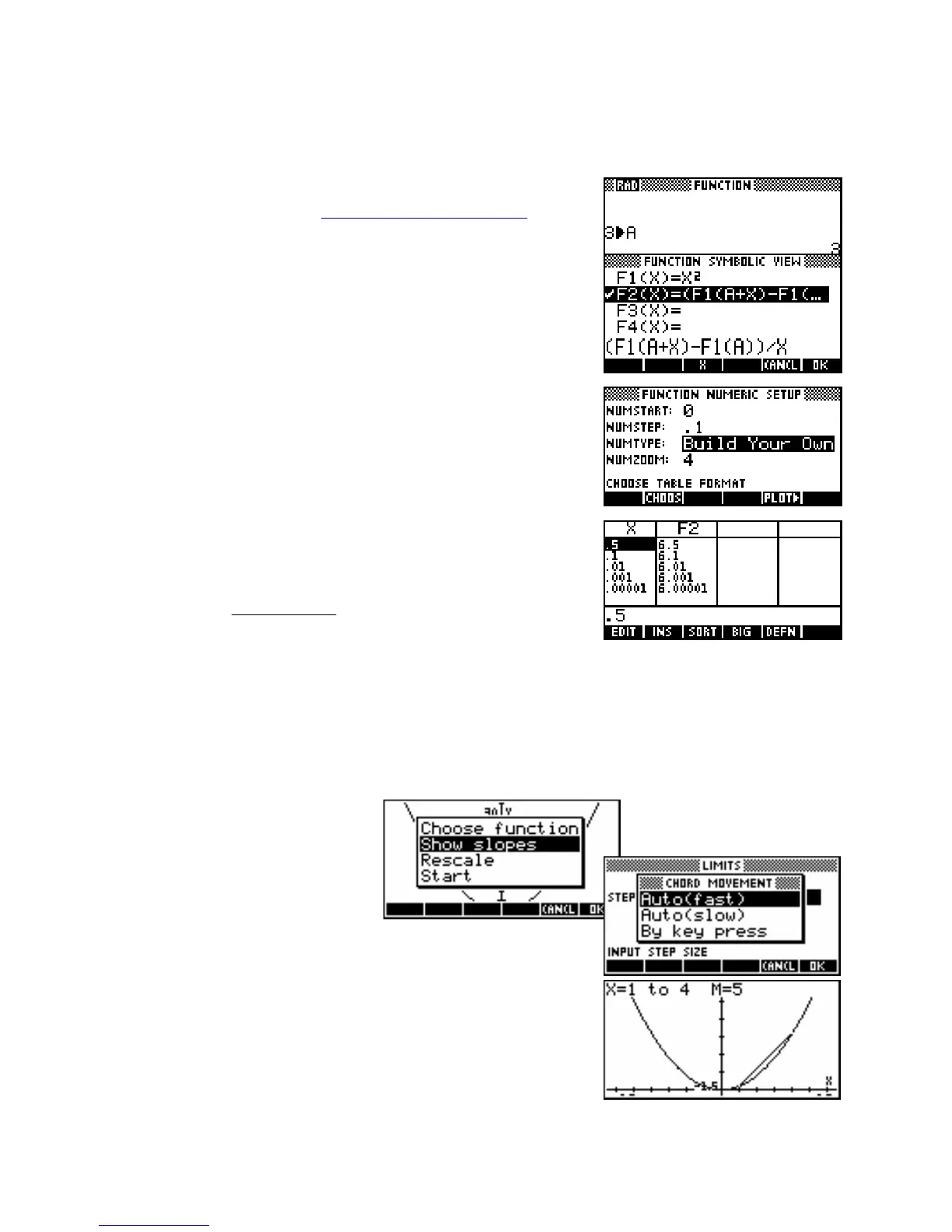G
G
r
r
a
a
d
d
i
i
e
e
n
n
t
t
a
a
t
t
a
a
P
P
o
o
i
i
n
n
t
t
This is best introduced using an aplet called “Chords” downloaded from
The HP HOME View web site (at
http://www.hphomeview.com
), but
you can also use the Function aplet. If you use the aplet you will find
that there is a worksheet supplied with it.
To do it in the Function aplet, enter the function being studied into
F1(X).
To examine the gradient at x=3, store 3 into A in the
HOME view as
shown right, then return to the
SYMB view and enter the expression
shown right into
F2(X).
Change to the
NUM SETUP view and change the NumType to “Build
Your Own”.
You can now enter successively smaller values for X in the
NUM view,
since X is taking the role of h in the expression
(
+
)
−
(
'
()
=
lim
fa h fa
)
.
fa
h→0
h
To investigate the gradient at a different point, change back to the
HOME view, enter a new value into A and
then return to the
NUM view.
The disadvantage of the previous method is that it is not very visual. As mentioned before, an alternative is to
use the “Chords” aplet.
In this aplet, a menu is provided via the
VIEWS menu to allow students to
choose from a list of predefined
functions or enter their own.
Once the function has been graphed, the ‘Show slopes’ option will
display an animated series of chords of diminishing length, with the
gradient displayed at the top of the screen. As the chord shortens the
student can see how this affects the approximation to the gradient at the
point chosen.
317

